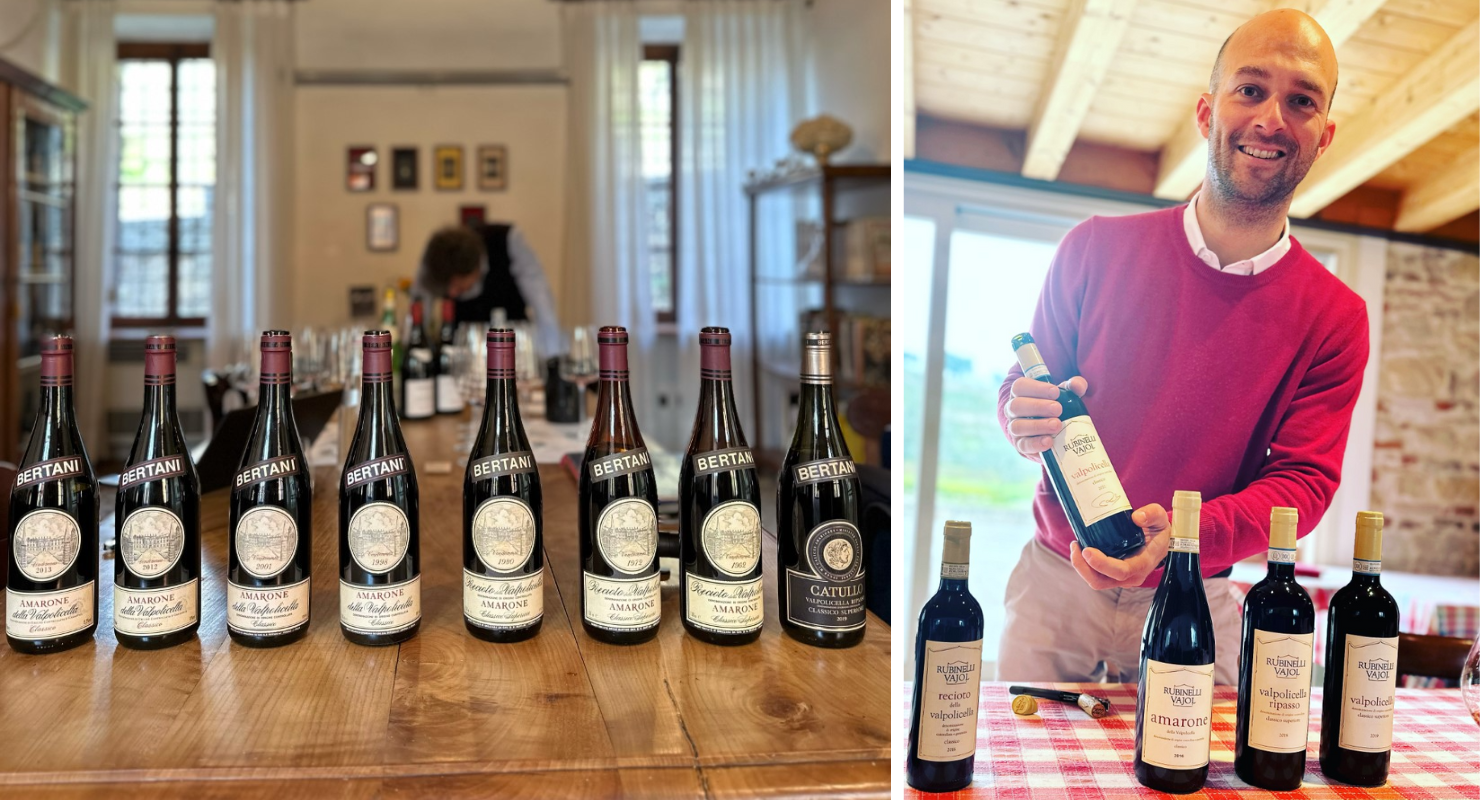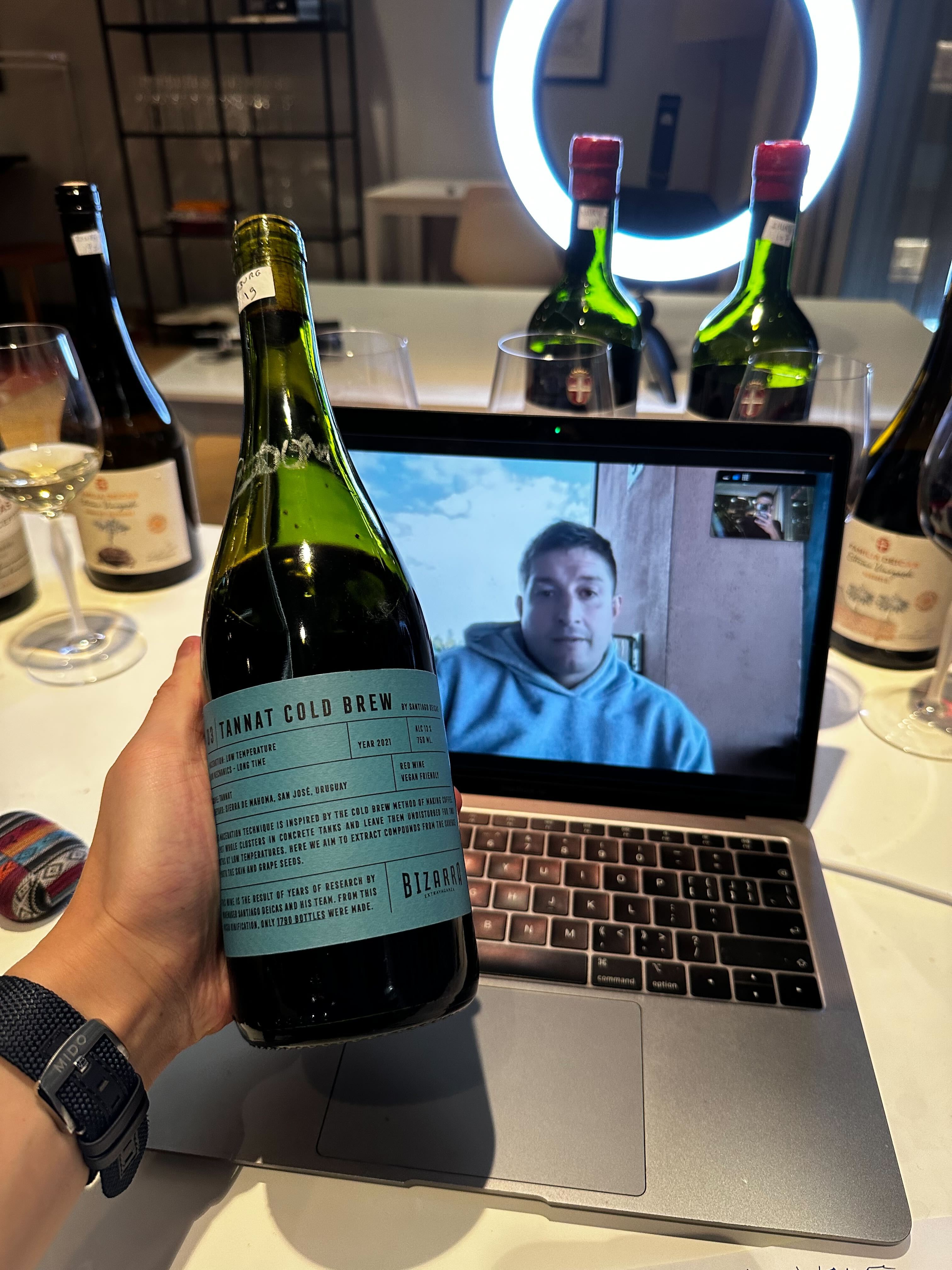
Veneto isn’t just Italy’s biggest wine-producing region, it’s also its most stylistic and has a far broader panoply of wines than those from southern regions like Sicily and Puglia, whose wines consumers can count on for their sunny dispositions and ripe fruit.
For red wines, Valpolicella and Amarone serve as the regional signposts for Veneto’s stylistic aspirations, although from a consumer’s perspective it’s often difficult to gauge what to expect from them. While straight Valpolicella is largely a red-fruited, effusively energetic and straightforward crunchy red, Valpolicella Superiore is articulated with better quality fruit and a litany of different tank and/or oak regimes, with or without the inclusion of dried grapes (appassimento). The Ripasso and fully-fledged Amarone tiers, too, offer radically different interpretations of what a Veneto wine can be. But regardless of which category they fall into, many of the wines I tasted during my recent trip there struck a delicious chord.
Valpolicella could be just as fashionable as cru Beaujolais or Loire reds if more arbiters of taste championed its similarly red-fruited and crunchy style. As it is, producers are seeking greater levity in their wines by sourcing fruit from higher, better-ventilated vineyards such as those in higher parts of the Classico region or in the eastern Illasi sub-region, while also eschewing dried fruit and botrytis, at least at the Valpolicella and Valpolicella Superiore tiers.
READ MORE TOP 100 WINES OF ITALY 2022

My favorite Valpos include the Tedeschi Valpolicella Lucchine 2022, the Bertani Valpolicella Classico Le Miniere di Novare Bertani Cru 2021 and, above all, the Rubinelli Vajol Valpolicella Classico Superiore 2019, which comes from a producer that is arguably the new superstar of the style. All are examples of bright, transparent wines that will light up any table by virtue of their freshness and transparency.
Ripasso is a growing curio of a category, its method of production bifurcated and shifting depending on the producer (I will have more on Ripassos in my coming report on Veneto). For Amarone, while some expressions feel more synonymous with eating, Bertani’s paradigm shift under winemaker Andrea Lonardi, from a style that felt fusty throughout the 1990s and early- to mid-2000s, to one of poise, freshness and pixelated detail, is a joy to behold. The Bertani Amarone della Valpolicella Classico 2001 is merely a hint of what to expect in coming vintages. I also like the redder fruit profile and pungent mineral undercarriage of the Tedeschi Amarone della Valpolicella Classico Capitel Monte Olmi Riserva 2016.
Guiseppe Quintarelli and Le Ragose are two other producers in the Classico zone that I hold in equal esteem when searching for styles defined by a dichotomous power and oxidative detail on one hand, lightness on the other. I was fortunate enough to taste some of the older vintages of each producer, including Le Ragose Amarone della Valpolicella Classico Riserva 2006, a tour de force on par with the esteemed Giuseppe Quintarelli Amarone della Valpolicella Classico 2015.
Yet as Nicola Scienza of Rubinelli Vajol posited, one must look at the Valpolicella and the Recioto della Valpolicella to truly comprehend the overarching quality of any Veneto estate. Indeed, it was the Recioto category that excited me most of all. While we lazily categorize these wines as “sweet” or “dessert,” their versatility and uncanny meld of gritty coal-face tannins and bright acidity renders them perceivably dry, allowing for broader usage alongside savory dishes, assorted cheeses or as a vino da meditazione. Highlights included wines from Quintarelli, Le Ragose and Gini, but also the Speri Recioto della Valpolicella Classico La Roggia 2020 – a wine of kaleidoscopic complexity and infinite length.

ONWARD TO THE RHONE
In a few days, Senior Editor Stuart Pigott will be leaving for two weeks of deep immersion in the wines of the Rhone Valley in France, but he had an important Rhone revelation before his departure.
“We already regard Andre Berthet-Rayne as one of the best producers in the up and coming appellation of Cairanne,” Stuart said, “but this year Andre and his daughter Alexandra surprised us with two revolutionary natural wines.“
Both have the Cairanne appellation and are biodynamic. “The revolutionary thing is how the Berthet-Raynes have achieved a wonderful freshness and purity of fruit aroma without adding any sulfur,” Stuart said.
Stuart was bowled over by the stunningly aromatic and beautifully balanced white A. Berthet-Rayne Cairanne Blanc Les Perchettes 2022, a cuvee of the local roussanne, marsanne, viognier and grenache blanc grapes. However, the red A. Berthet-Rayne Cairanne Les Perchettes, a cuvee of grenache and syrah, was almost as impressive.
“They prove that natural wines can have great immediate appeal and don’t need to be full of funky aromas,“ Stuart said. “I’m full of admiration for the winemakers, as I can’t figure out how they made this work. Hats off to the Berthet-Raynes!“
Stuart’s other discovery was from the Kranz winery in the southern part of the Pfalz region of Germany. “I’ve been following the development of Boris and Kerstin Kranz for almost 20 years, and not only were the new wines I tasted a career best, there was also a game changer among them.“
Stuart, like James Suckling, has been tasting German wines for 40 years, and it’s not often that they come across a stunning wine from a vineyard site they never heard of before.
“The dry Kranz Riesling Pfalz Ransbacher Seligmacher EL 2021 is an incredibly racy and expressive wine with stacks of wild herb and stony character. However, when I read the tongue-twister name site name – Ransbacher Seligmacher – on the label I thought, ‘Where’s that?’“ Stuart said.

The Seligmacher turns out to be a close neighbor of the much more famous Kastanienbusch GG site of Birkwiler, from which the Rebholz and Dr. Wehrheim wineries have made many great dry rieslings – and where Kranz’s riesling vines stand the soil is the same type as the Kastanienbusch.
“Rotliegend – yes, that’s also the name in English! – looks like a red slate, but it’s actually a special type of sandstone with a layered structure, that was formed 280 million years ago when Germany was a desert,” Stuart explained. “Kranz’s masterpiece confirms Rotliegend is very special dirt for dry riesling.”
READ MORE TOP 100 WINES OF GERMANY 2022

TANNATS FROM THE COFFEE-MAKING PLAYBOOK
Senior Editor Zekun Shuai has started his tastings of Uruguayan wines in our Hong Kong office, many of them new releases from the 2021 and 2022 vintages, and he was impressed with the crunchier styles and tannin quality of many tannats. 2022 was a very rainy harvest, though, and many of the tannats from the vintage tasted lighter, with several producers now extracting finer tannins from the skins, not seeds.
Santiago Deicas of Familia Deicas told Zekun about their two completely different ways of extraction, borrowed from coffee-making: the “espresso” and “cold brew” methods. The first involves harvesting early and doing a quick, espresso-like extraction with high temperature to the get more color and fine tannins from the skins, while the second involves selecting terroirs where seeds can ripen well but without overripening the fruit, and doing an extended, cold maceration and fermentation that takes up to two months.

The Bizarra Tannat Sierra de Mahoma Espresso 2021 and Bizarra Tannat Sierra de Mahoma Cold Brew 2021 are the pleasing results of each method. Both are deliciously drinkable, even though Zekun preferred the Cold Brew for the beautiful load of fruit, pepperiness, elegance and fluidity with even more crunch and clarity on the palate.
Even more impressive from Familia Deicas was their sensational albariño – the Familia Deicas Albariño Canelones Cru d’Exception 2020. It’s the first vintage from the granite-rich soils of their vineyard in Garzon, in the coastal province of Maldonado. It is also worth noting that the wine was matured in Burgundy barrels – two-thirds of which were new – for 15 months.
“Albariño is quite flexible here in Uruguay, and many styles exist: oaked, unoaked, wines from the coast or more inland, and some people are also making good skin-contact versions,” Deicas told Zekun, adding that the pH level of the Cru d’Exception is just 2.95.
And don’t be put off by this wine’s initial notes of oak praline and creaminess. Give it time to decant and let its complexity, depth, acidity, tension and minerality unfurl. It’s one of the most exciting albariños we have tasted in a long time. For those who don’t think that an albariño can reach a world-class level, open a bottle of this and let the surprises seep in.
– Ned Goodwin MW, Senior Editor, with contributions from Stuart Pigott and Zekun Shuai.
The list of wines below is comprised of bottles tasted and rated during the past week by James Suckling and the other tasters at JamesSuckling.com. They include many latest releases not yet available on the market, but which will be available soon. Some will be included in upcoming tasting reports.
Note: You can sort the wines below by country, vintage, score and alphabetically by winery name. You can also search for specific wines in the search bar.

